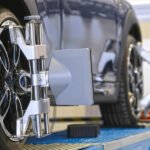

The Drawbacks of Stretched Sedans: Cruising in Comfort or Compromising Convenience?
Stretched sedans, characterized by their extended wheelbases and opulent interiors, emanate an unmistakable sense of luxury and prestige. However, before indulging in the extravagance of these elongated cruisers, it’s essential to carefully weigh the potential downsides that may not be readily apparent. Let’s explore the key drawbacks associated with these luxurious vehicles.
Parking: A Tight Squeeze:
Parking a stretched sedan poses a considerable challenge due to its increased length, exacerbating the already daunting task of maneuvering a standard-sized sedan into tight spots. With stretched sedans typically extending 4 to 8 feet longer than their conventional counterparts, some models surpass 20 feet in length. This substantial increase in size severely limits their ability to fit into standard parking spaces, garages, and drive-thrus, adding a layer of frustration and inconvenience for drivers.
Maneuvering Challenges: Tight Turns and Narrow Roads Beware:
Maneuvering a stretched sedan presents significant challenges, particularly when encountering tight turns and navigating narrow roads. Negotiating sharp turns and traversing narrow streets suddenly become daunting tasks, requiring careful precision and anticipation. Whether maneuvering through a multi-level parking garage or navigating winding mountain roads, drivers must exercise heightened awareness and skill.
The increased wheelbase of stretched sedans directly impacts their turning radius, the minimum space required to execute a U-turn. This turning radius can be 20-30% larger than that of standard models, potentially exacerbating navigation difficulties in confined spaces. In essence, drivers of stretched sedans must remain vigilant and adaptable, as negotiating tight turns and narrow roads demands a heightened level of caution and precision.
Fuel Efficiency: Thirsty Giants:
Fuel efficiency becomes a notable concern for stretched sedans, often characterized as thirsty giants due to their increased weight and aerodynamic drag. The additional weight and altered aerodynamics of stretched sedans contribute to heightened fuel consumption, necessitating more frequent visits to the gas station to replenish the tank.
Depending on the specific model and any modifications made, drivers should anticipate a considerable decrease in fuel efficiency compared to their standard counterparts. This decrease typically ranges from 10 to 20%, resulting in a noticeable difference in miles per gallon (MPG) when compared side by side.
Maintenance Woes: Bigger Car, Bigger Bills:
Maintaining a stretched sedan can lead to significant maintenance woes, primarily due to its increased complexity and unique modifications. The complexity of stretched sedans necessitates specialized parts and expertise for maintenance and repairs. This often means sourcing specialized components and seeking out mechanics with experience working on these unique vehicles.
Drivers should prepare for higher maintenance costs associated with stretched sedans. Components such as tires, brakes, and suspension systems incur increased wear and tear due to the vehicle’s larger size and weight. Consequently, replacing these parts can result in higher expenses compared to standard sedan models.
Moreover, specialized shops with experience in stretched sedans may charge premium rates for their services, further adding to the maintenance bills associated with these vehicles. In summary, maintaining a stretched sedan entails navigating increased complexity, sourcing specialized parts, and potentially facing higher costs for maintenance and repairs, making it crucial for owners to budget accordingly.
Resale Value: A Niche Market:
Stretched sedans, despite their extravagance, often appeal to a niche market, significantly smaller than that of standard models. As a result, reselling such vehicles can pose challenges and potentially lead to higher depreciation rates. The limited appeal of stretched sedans translates to a smaller pool of potential buyers, making it more difficult to find interested parties when it comes time to sell. Consequently, sellers may encounter extended periods on the market and may need to lower their asking prices to attract buyers.
In terms of resale value, stretched sedans typically command lower prices compared to their standard counterparts. Depending on the extent of modifications and market demand, the resale value of a stretched sedan can be 20-30% lower than that of a standard model.
In summary, the limited appeal and lower resale value of stretched sedans highlight the importance of careful consideration before purchasing one, as owners may face challenges when it comes time to resell and may experience higher depreciation rates compared to standard sedan models.
Conclusion:
Before succumbing to the allure of a stretched sedan, it’s essential to conduct a thorough assessment of your lifestyle and driving habits. While these vehicles undoubtedly provide comfort and elevate status, it’s crucial not to overlook the downsides in terms of practicality, cost, and resale value. Take the time to carefully weigh the pros and cons to ensure that this extravagant ride aligns with your needs and budget effectively. By doing so, you can make an informed decision that best suits your individual circumstances and preferences.
Add a comment Cancel reply
Categories
- Car Gadgets (17)
- Car News (33)
- Car Reviews (43)
- Car Wars (7)
- Mechanicals (32)
- Uncategorized (2)
Recent Posts
About us

Popular Tags
Related posts


The New Car Smell: What you need to Know

Buyer Beware: Why Ex-Government Cars in Africa Might Not Be a Bargain








